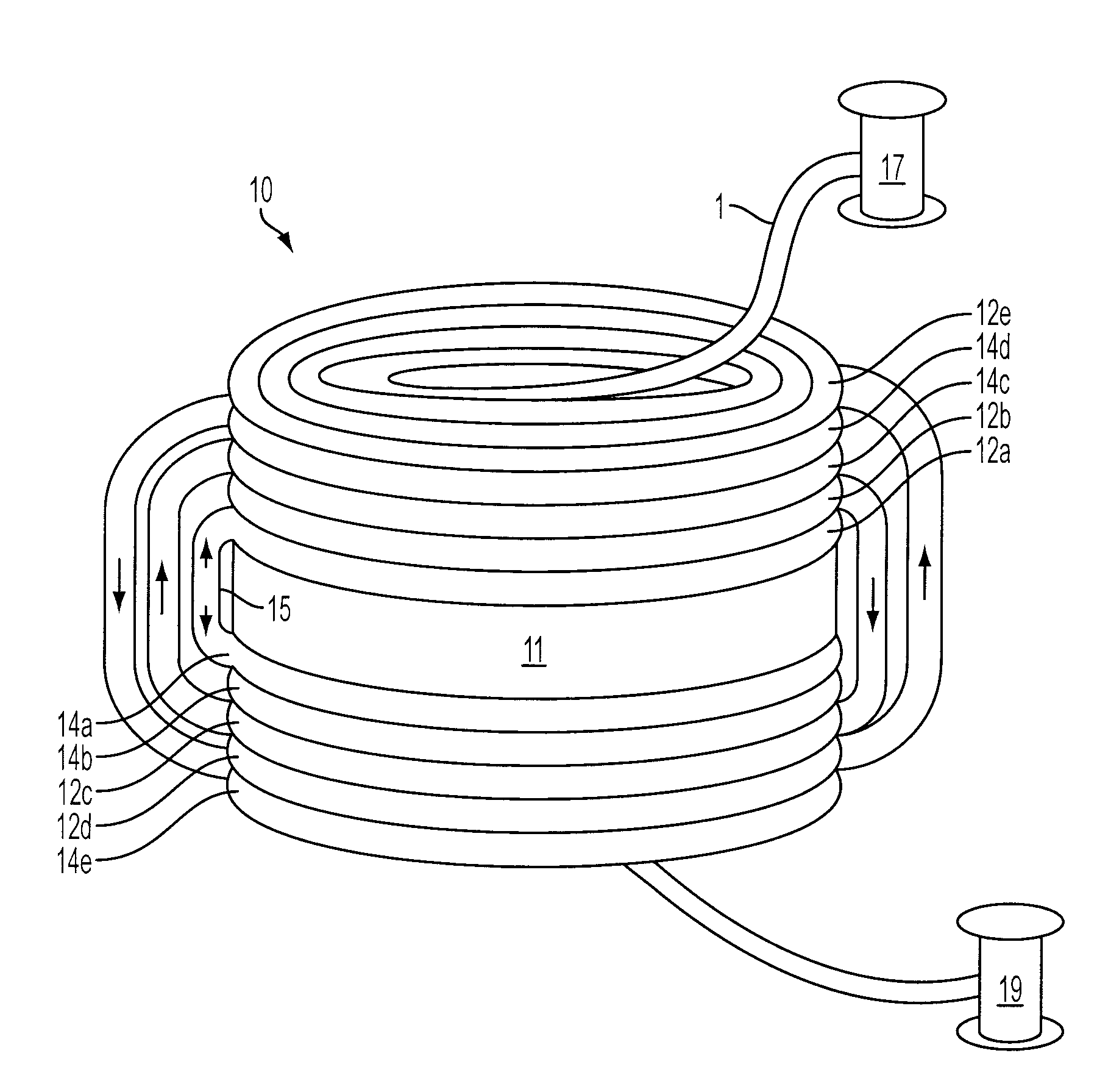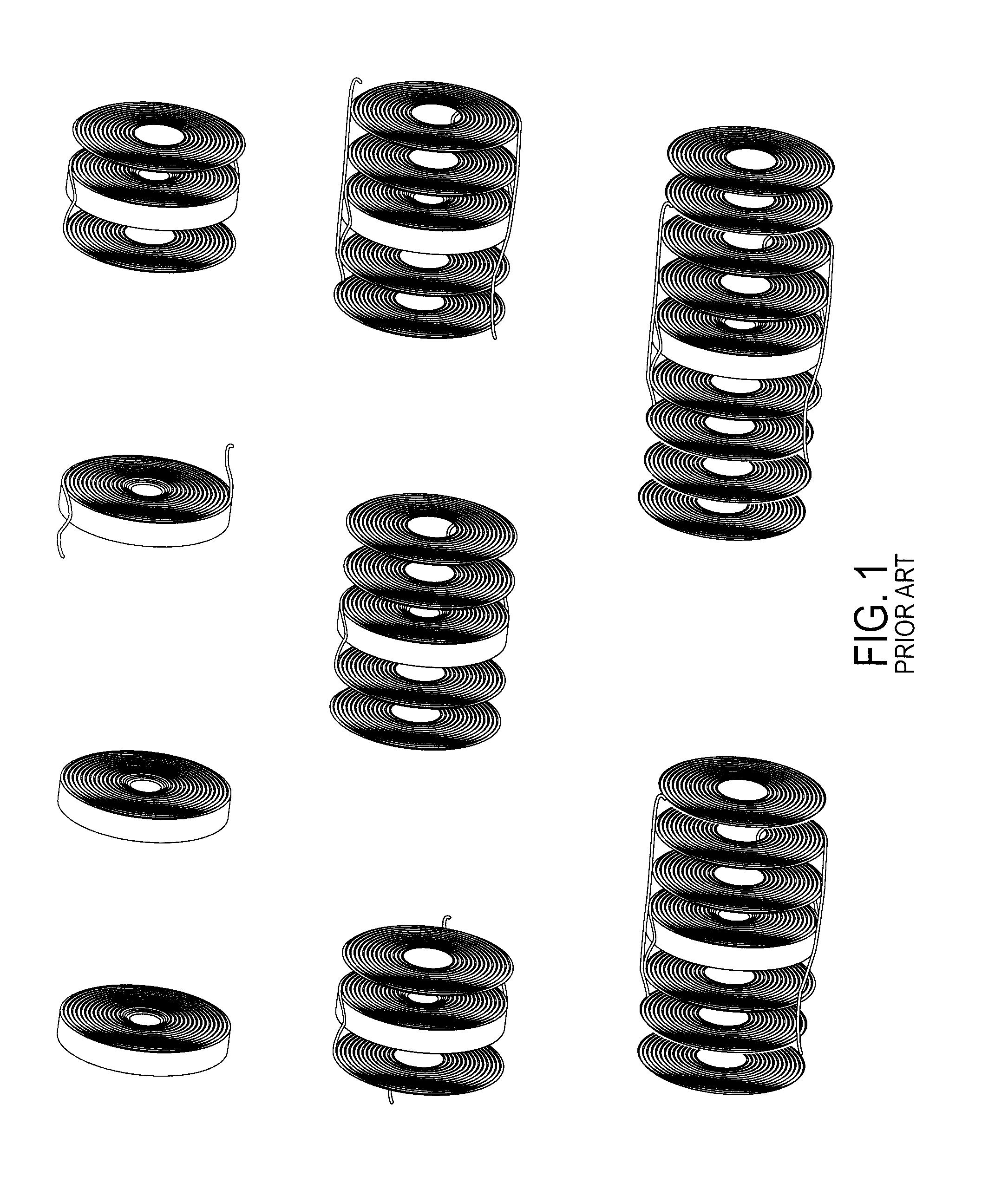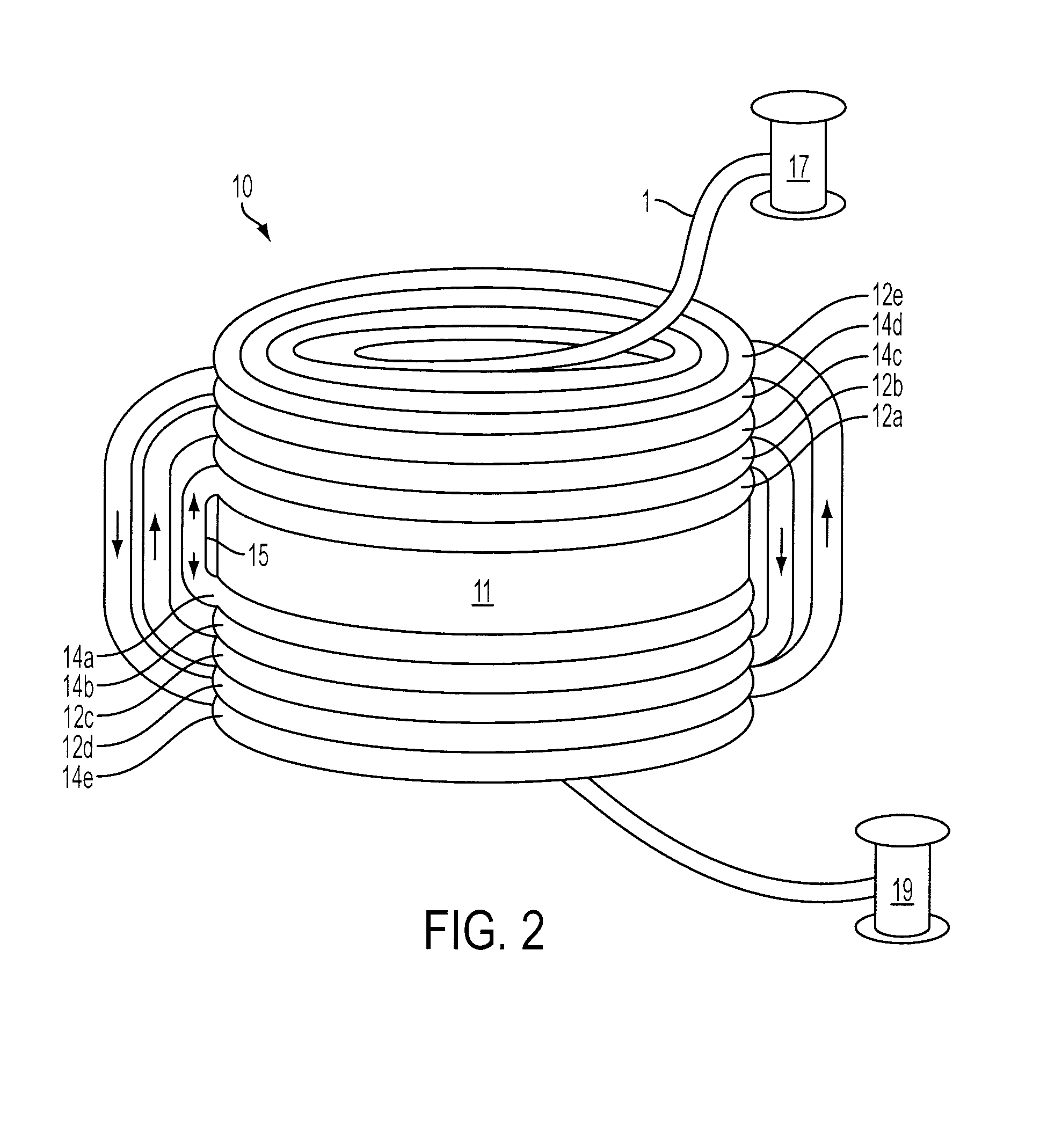Crossover-Free Fiber Optic Coil Sensor and Winding Method
a fiber optic coil sensor and coil technology, applied in the field of fiber optics, can solve the problems of reducing the performance of the fiber optic gyroscope, the use of relatively expensive polarization-maintenance, and the inability to detect cross-over sites or contact points, so as to reduce the time-varying thermal gradient and eliminate the effect of crossover sites or contact points
- Summary
- Abstract
- Description
- Claims
- Application Information
AI Technical Summary
Benefits of technology
Problems solved by technology
Method used
Image
Examples
Embodiment Construction
[0040]Reference will now be made in detail to embodiments of the disclosed crossover-free fiber optical coil sensor and winding method, examples of which are illustrated in the accompanying drawings.
[0041]FIG. 2 is a diagram illustrating various embodiments of the invention wherein a coil form 11 (similar to a flat ring washer) provides structural support for a fiber optic coil 10. The fiber optic coil 10 comprises a plurality of coil layers, 12a through 12e and 14a through 14e formed from fiber optic cable 1 supplied from a first supply spool 17 and a second supply spool 19, respectively.
[0042]In some embodiments, winding of the fiber optic coil 10, is initiated by winding fiber optic cable onto a first supply spool 17 and a second supply spool 19. In a preferred embodiment, the amount of fiber optic cable wound onto the first supply spool 17 and the amount of fiber optic cable wound onto the second supply spool 19 are substantially equal in length. The amount of fiber optic cable ...
PUM
| Property | Measurement | Unit |
|---|---|---|
| diameter | aaaaa | aaaaa |
| thickness | aaaaa | aaaaa |
| diameter | aaaaa | aaaaa |
Abstract
Description
Claims
Application Information
 Login to View More
Login to View More - R&D
- Intellectual Property
- Life Sciences
- Materials
- Tech Scout
- Unparalleled Data Quality
- Higher Quality Content
- 60% Fewer Hallucinations
Browse by: Latest US Patents, China's latest patents, Technical Efficacy Thesaurus, Application Domain, Technology Topic, Popular Technical Reports.
© 2025 PatSnap. All rights reserved.Legal|Privacy policy|Modern Slavery Act Transparency Statement|Sitemap|About US| Contact US: help@patsnap.com



